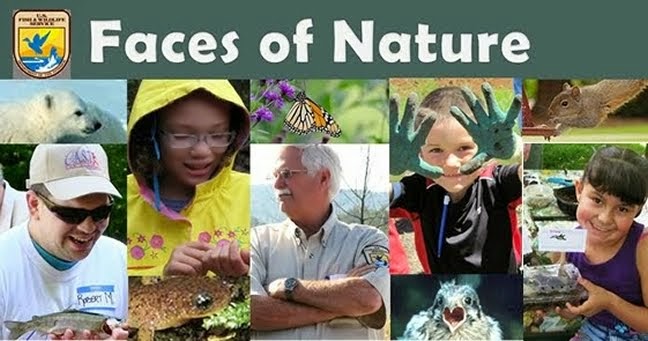 |
| Group photo - United Cerebral Palsy & U.S. Fish & Wildlife employees. Credit: Little White Salmon NFH |
You may recall my blog from about two months ago where I focused on the theme of mobilizing nature. I was fascinated then by a group of nature enthused senior citizens, and earlier this month had the chance to experience that feeling all over again. As part of an initiative to provide all people with the
opportunity to connect with nature, the U.S. Fish & Wildlife Service is
constantly seeking opportunities to improve accessibility and assure that folks of all shapes, sizes and abilities can visit our facilities.
Most recently, Little White Salmon National Fish Hatchery (NFH) went above and
beyond this initiative and created an accessible Fishing Platform. This platform allows people with disabilities and the
elderly easy access to fish on Drano Lake, one of the most popular fishing areas on the
mid-Columbia River!
 | |
| Everyone excited to get started with their fishing day! Credit: Meghan Kearney/USFWS |
"No Excuse" Nature
With some of the barriers on fishing in the Pacific
Northwest, such as rocky, hilly shores or inaccessible boats, it can
typically be a bit
difficult for persons who need a little extra help getting mobile to
experience
the excitement of fishing. The new ramp at Little White Salmon NFH not
only
offers easy access to this fun sport or pastime, but provides a relaxing
and
unique fishing spot that everyone can use. Most importantly, this ramp
is just one of many examples of my "no excuse" policy to getting
outside!
Mobilizing Nature, Part 2
Much like the ladies from Oatfield Estates, this group from United CerebralPalsy of Oregon & Southwest Washington came out to Little White Salmon NFH full of enthusiasm. Excited to test out the new fishing platform, thoughts of physical barriers and challenges were left behind. It was a cloudless, sunny day and the group
was eager to get down to the shore and set up their fishing poles. A handful of
Service employees were in attendance, joyfully helping to bait and cast fishing poles while keeping an eye out for any bites.
For some of the group, it was their first time fishing, but they spent the
afternoon out on the shore like old pros.
| USFWS Deputy Regional Director, Richard Hannan, getting the pole all set up for one of our fisherman! Credit: Meghan Kearney/USFWS |
More Than Just Fishing
Followed by our afternoon fishing adventure, we took a tour of the fish hatchery, and a
view of the annual spring Chinook salmon spawning. We also went
underground to the fish holding tank viewing windows. Here, we were introduced to
some of the larger fish about to be spawned, but spotted a few “jacks.”
These are smaller, but fully grown fish who return to their native streams
earlier than other salmon, which is the reason for their smaller size. Faces were aglow as fish about half our size sped past the viewing windows. The day
closed out with a picnic in the sun and a feast of delicious, juicy watermelon
given to us by our guests! Though attendees at this fishing event (myself
included), probably got their fill of salmon for the day, I am sure a return
trip will be in order in the very near future.
For more detailed information on the Fishing Platform at Little
White Salmon NFH, visit their webpage and "like" them on Facebook! You can also visit the Facebook page of United Cerebral Palsy!


























